And even though they're huntable year-round, their numbers are growing and range expanding.
Problem is, they're smart. They go nocturnal and hide in rough, remote areas - making dogs and diligence necessary. More work than most weekend hunters want to invest.
And while potentially delicious, they are most assuredly destructive - they can rotor-till an oak woodland or rush wetland into lifeless dirt clods in 1-night-flat (as well documented by the Codger). You see, those truffle-sensitive snouts also give them the uncanny ability to sniff out buried acorns, earthworms, salamanders, voles, pocketmice, and the bulbs of our native lilies and their like, such as mariposas, brodiaeas, prettyface, Ithuriel's spear, soap plant, bloomeria, and blue dicks. And their endless appetite means no leaf litter or sod goes unturned.
Here's over a dozen going by a cam - including a number of piglets:
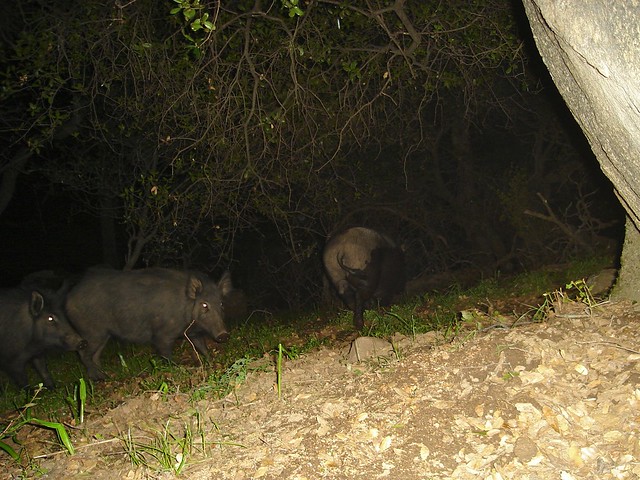
A parade of feral pigs, Sus scrofa, going by at 7:40pm
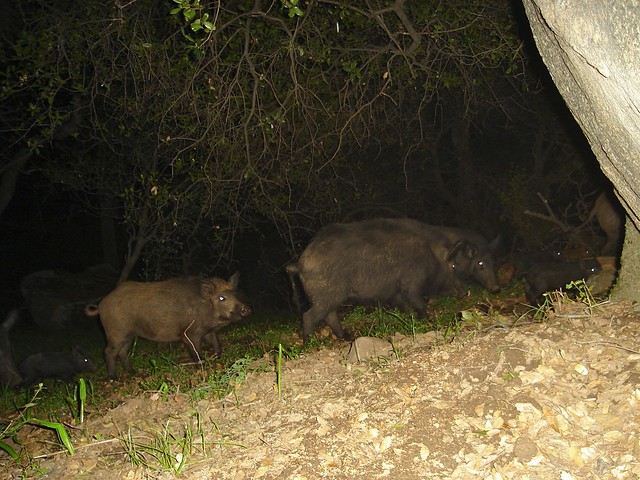
Unfortunately, those little piggies aren't going to market...

The flash at night really adds to their creepy-evil look
And another side of pork near by that somehow pushed a branch in front of the camera:
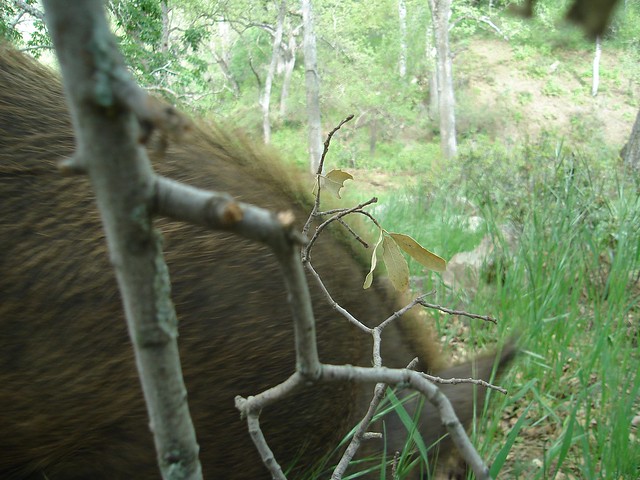
A rusty razorback going by the cam
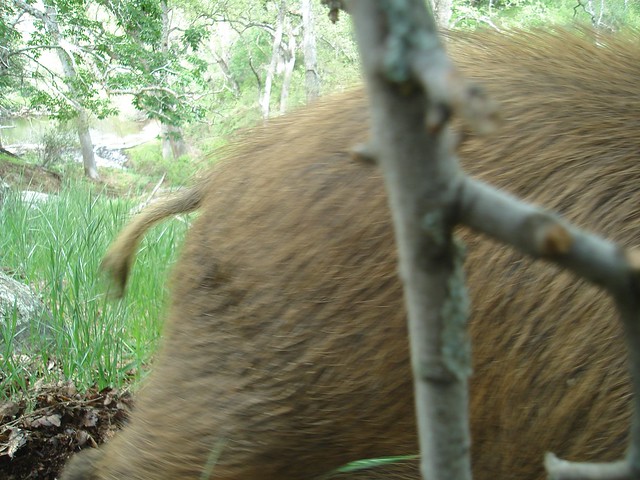
And one trying to figure out a camera:

"OK - that's the camera lens..."
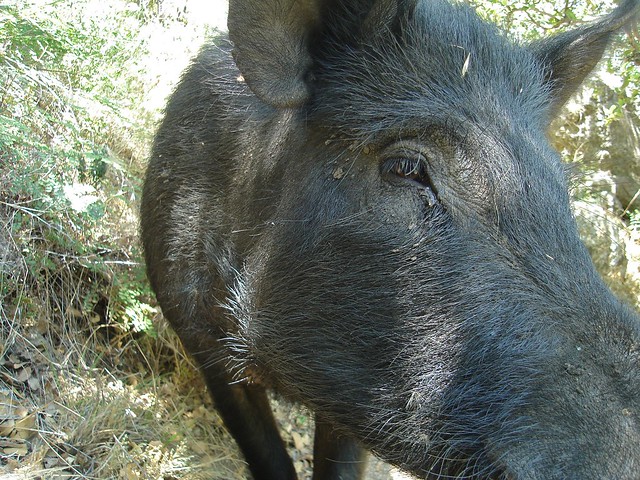
"And that's the infrared motion sensor. Hmmmm..."
I've had them deep-pit cooked, and as flavored sausages. Both were outstanding.
So, if you like cheap pork, get your hunt on.
Your native flora & fauna needs you.
====
References:
- Camera Trap Codger - posts on Feral Pigs
- Wikipedia - Wild Boars

They really do look evil...
ReplyDeleteHenry Coe is where I first became acquainted with their destructive potential. Trying to find a sleeping spot at a campsite they've torn to hell is not fun.